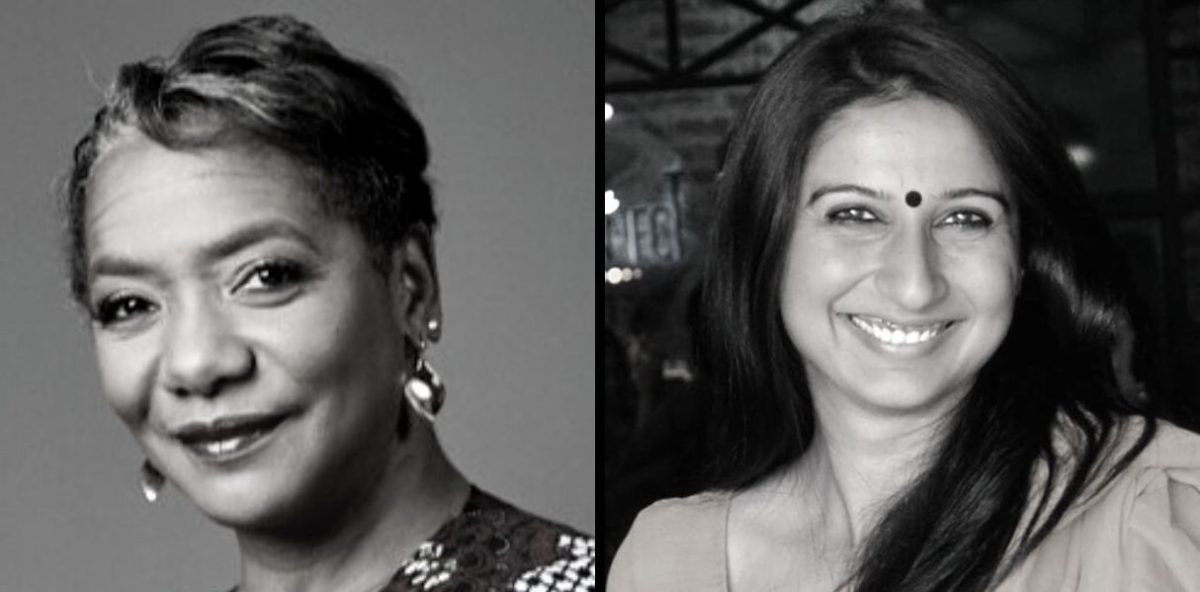‘Diversity Is About Numbers, Inclusion Is About Impact’: Janet Stovall, Global D&I Champion

Written by: Rajkanya Mahapatra
Janet Stovall is currently a Senior Client Strategist at the NeuroLeadership Institute. She was the former Senior Director at the UPS for Social Impact and The UPS Foundation and TEDx speaker. Her career spans over three decades across multiple sectors. In her own words, she’s a radical inclusionist who helps “some of the world’s leading companies trade subjectivity for science to make diversity, equity and inclusion more brain-friendly, more human—and a lot more effective.”
In conversation with, Pallavi Pareek, Founder of Ungender and Conduct, Janet makes some crucial points how diversity and inclusion needs to understood and implemented at workplaces.
Why D&I Should Come From The Leaders
Pallavi: How do we get company leadership who are, in most cases, predominantly upper-caste cisgender men (the equivalent to the white cisgender men) to admit and accept the lack of diversity and inclusion and sexual harassment at their companies is a reality and that they need to fix it? Acceptance is the first step, right?
Janet: Absolutely. Diversity, and inclusion does not happen in an organisation unless the CEO believes in it – it has to be driven from the top. Now, the work gets done throughout the whole company, the work needs to be done at every level, you have to look at the people who are frontline managers, who are making decisions day-to-day, whether it’s from hiring or project assignments, that’s critical, the CEO isn’t doing that.
The CEO has to have a vision, the belief and the willingness to push for it. Then whoever reports on that level, whoever that person who is in-charge of the biggest pieces of the organisation, whether it’s operations, or whatever that is, whoever’s got the most employees, whoever the chief legal person is, and whoever the chief HR person is, these people have to be bought into this.
By buying it, I mean, I call myself a diversity pragmatist because I’m not one of those people who talks about doing ‘this’ because it’s the right thing to do. You know, in this country (USA), we thought slavery was the right thing to do for many, many centuries. So I don’t really want to depend on people doing it because it’s the right thing to do.
I think you do it in business because it’s a smart thing to do. Those same people, and all the people that report to the CEO, they have business directors and business strategies that they’re accountable for. If diversity and inclusion are part of that, then they will accountable for it. And they will see to it that it happens.
Is D&I A Social Justice Issue?
Pallavi: At some point, I truly believe that leaders are also struggling. I’ve seen three categories of leaders living in their own silos. The first kind says, “What is diversity?”, “What is inclusion?”, “How does it even matter?”, “Are you talking about social work? No, no, it’s got nothing to do with the business.” Folks of the second type are those who are aware and realise the importance of D&I in the workplace and are struggling to implement and adopt because there’s a blind spot somewhere and they don’t know how to connect D&I dots with business directives. Finally, folks of the third type are those individuals who have figured it all out. Good for them! Each type is on their journey. I do believe mature leaders are out there making things happen but it takes one to know one. What would it take for leaders to reach out to folks like you and me and accept that their workplaces have issues and say, ‘please come and fix it’?
Janet: I think your characterization of those three groups is spot on! I think part of the problem is the way we talk about it. You know, we do talk about it (D&I) often, as we should do because it’s the right thing to do, as long as you keep it within the business realm it stays subjective. As long as it’s subjective, it is subject to being somewhat ignored, certainly being de-prioritised. Unfortunately, it’s also subject to all the vagaries that come with talking about D&I anyway – unconscious bias, historical belief systems, you got to get it out of that.
When we talk about things like sales quotas, or value systems, anything that we consider in the business realm – we don’t talk about them subjectively, we put some hard numbers there.
We say something is good, and we figure out why we need it. We look at the problems which we’re trying to solve, and we put resources behind it. We determine the level of those resources based on the size of the problem which generally has something to do with the bottom line. We do objective thinking about it.
Then, we take Diversity and Inclusion and put it in the ‘Feels Good’ category. We know what happens to anything that’s in the ‘Feels Good’ category – when stuff gets tight that goes away. If you throw in the fact that people are unconsciously biased and add all the ‘isms’ to it – racism, sexism, ableism, then it gets even more difficult.
Diversity and Inclusion has to get over those hurdles. So to your point, those people in the middle, the ones who don’t think it has anything to do with them, they’re gonna take a little bit more pushing. But those people who understand it, and have heard the language, they need to be spoken to in a different language. They need to hear and understand how it connects. To do that, you need people who can always make that connection.
Those of us who were in the position to talk about this in our companies need to stop talking about it as social justice. Social Justice is an issue that corporations need to care about because I believe that companies are the ones that have the power and the footprint to change that in the world. But within their own walls, this is not a social justice issue – this has to be a business issue and making that connection is part of what we do. We have to school ourselves to talk about D&I in a different way.
Pallavi: I think 90% of the D&I conversation is actually about explaining what it means. For the longest time, as long as I have been working, I’ve seen that people have taken D&I as a single concept. When diversity is one thing and inclusion is completely different. The ‘who you are’ and ‘how you are’ needs to be separated.
Janet: Diversity is a numbers game. Inclusion is about impact. Diversity is something you ‘have’ and inclusion is something ‘you do’. You’ve to be intentional to stop diversity with way demographics are going. You have to be intentional to start inclusion. That doesn’t happen organically. They are very different.
I always say that diversity is bodies in the building. It’s a numbers game, you can count those people. It’s a little bit harder to measure inclusion. What the D&I conversation requires is a commitment to really caring about it.
Do You Know What Kind Of Diversity Your Company Needs
Pallavi: For diversity, what are we counting? Traditionally, we end up counting the number of women, and that too, only cis women. We are not counting women of colour right now, women of race and religion right now. We’re not even distinguishing whether we’re talking about straight women, cis women or trans women – I’m not even going there. So if I take one single small element of diversity and put it as ‘women’, even there, we are completely missing the point. So, what are we counting really?
Janet: The question is: what should we be counting? If we take this out of the realm of social justice and put it in the realm of business, you have to ask yourself, what is the problem you’re trying to solve? Because that determines what type of diversity you need. We never want to talk about it that way.
The question is: what are we solving for? If you don’t know, number one – what’s your vision for diversity? What a diverse organisation looks like for you. That will be different depending on what your organisation is. Next, what are your business goals? Answering that will determine what your diverse organisation looks like, then what do you need.
For Your Business, You Would Always Need A Diverse Workforce
It is possible, I suppose, theoretically, you could be an organisation where the problems you are solving did not require the input of certain groups. Now, realistically, I know that’s only the case if you are only trying to reach one audience. But we know, most businesses have to reach a wide audience.
Let’s say, you only had to talk to women. You could argue that your diversity only needed to include women. But to your point, even within that, we’re only talking to cis women, women of a certain income level and a certain background. If your target audiences are that distinct, then you maybe don’t need that one kind of diversity.
But let’s face it, that’s not the reality in most cases. So, not knowing what kind of diversity you have, and not identifying it up front what type of diverse input you need – when you do that, you’re just taking diversity as sort of this great broad category. That’s my issue and has been with the sort of the development of this word ‘diversity’.
When we first started talking about difference in the workplace, in this country (USA), it was with the civil rights movement. Twenty odd years ago, we first started making the business case for diversity here. We talked about race back then, because that was the big issue. We, women weren’t getting jobs, really. So we talked about race and we put quotas in place because we knew that’s where we had to address it. Eventually, it became an issue of gender, and eventually it has grown from there.
But now we’ve taken diversity and we’ve put it back in the fuzzy logic realm, where we say, well, it’s diversity of thought, and diversity of outlook. Okay, you know what, you could have three white guys in the room and have diversity of thought. Okay, that’s the basic, we know that. Right. That’s the job.
I think what you have to do though, you have to look at it and say, I believe in differentiated diversity. That means identifying what the people are in your organisation, identifying what you’re solving for, and then connecting how those people can help you solve for it.
This excerpt has been edited for length and clarity.
Watch the full interview, here:
Ungender Insights is the product of our learning from advisory work at Ungender. Our team specializes in advising workplaces on workplace diversity and inclusion. Write to us at contact@ungender.in to understand how we can partner with your organization to build a more inclusive workplace.
Read our insights about diversity, legal updates and industry knowledge on workplace inclusion at Ungender Insights. Visit our Blog.
Sign up to stay up-to-date with our free e-mail newsletter.
The above insights are a product of our learning from our advisory work at Ungender. Our Team specialises in advising workplaces on gender centric laws.
or email us at contact@ungender.in




